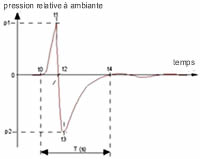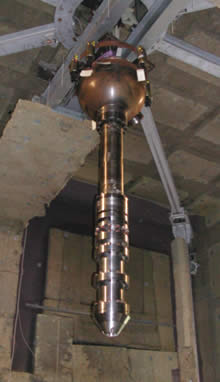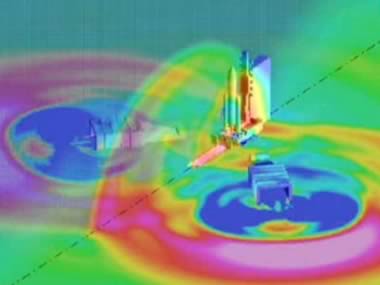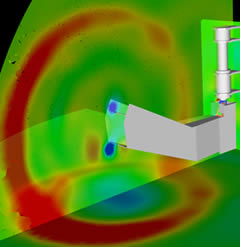Take-Off at the Martel Test Bench
To reproduce the shock wave of a launcher on take off, the University of Poitier's Martel* test bench is being adapted for the generation of acoustic transient phenomena.
Number 39
|
|
When the Ariane 5 launcher's two massive solid fuel thrusters fire up, the sudden release of combustion gases creates an extremely powerful shock wave. True, it does not damage the satellites carried by the launcher because they are designed to support such jolts. Nevertheless, satellite builders would be very pleased if they could relax the environmental constraints to which their craft are subject. Hence the work done by Onera, in partnership with CNES, EADS and the CEAT** in Poitiers, to reduce the effects of the shock wave. |
 Characteristic signal of a shock wave in open jet |
"Up to now we have had no other way of characterizing this shock wave than by firing up reduced scale thrusters", says Denis Gély, head of the "Aeroacoustic" research unit in Onera's Computational Fluid Dynamics and Aeroacoustic Department. But, when we perform tests at reduced scale, we cannot simulate the time scales related to the intrinsic characteristics of the solid fuel in combustion and it is difficult to play with the time of pressure increase. |
"Therefore, we had the idea of creating a test bench for simulating the shock wave, which did not involve the combustion of solid fuel", the researcher recounts. The shock wave generator system, designed by Onera with the support of the University of Poitiers' Combustion and Detonation Laboratory, is made up of a first spherical chamber that is filled with a mixture of air and methane at less than 10 bars. When this mixture is ignited, the deflagration raises the pressure to 100 bars and the temperature to 2,200°C. An opening is then created that releases the gases at high pressure and high temperature into a second chamber equipped with an ejection nozzle. "By varying the initial pressure of the gases and the ratio of the volumes of the two chambers, we can choose the speed of the increase in pressure". This increase can be very fast, up to 10 bars in one millisecond, which corresponds to the phenomenon observed at full scale. |
|
|
This system is currently being installed on the Martel test bench in Poitiers, designed for aeroacoustic studies of the jets of launchers such as Ariane 5 and Vega. The floor is reflective whereas the rest of the test building is covered with absorbent materials, simulating the way in which the shock wave will be absorbed above the launcher. Thus, the launcher's environment on take-off has been reproduced.
|
|


